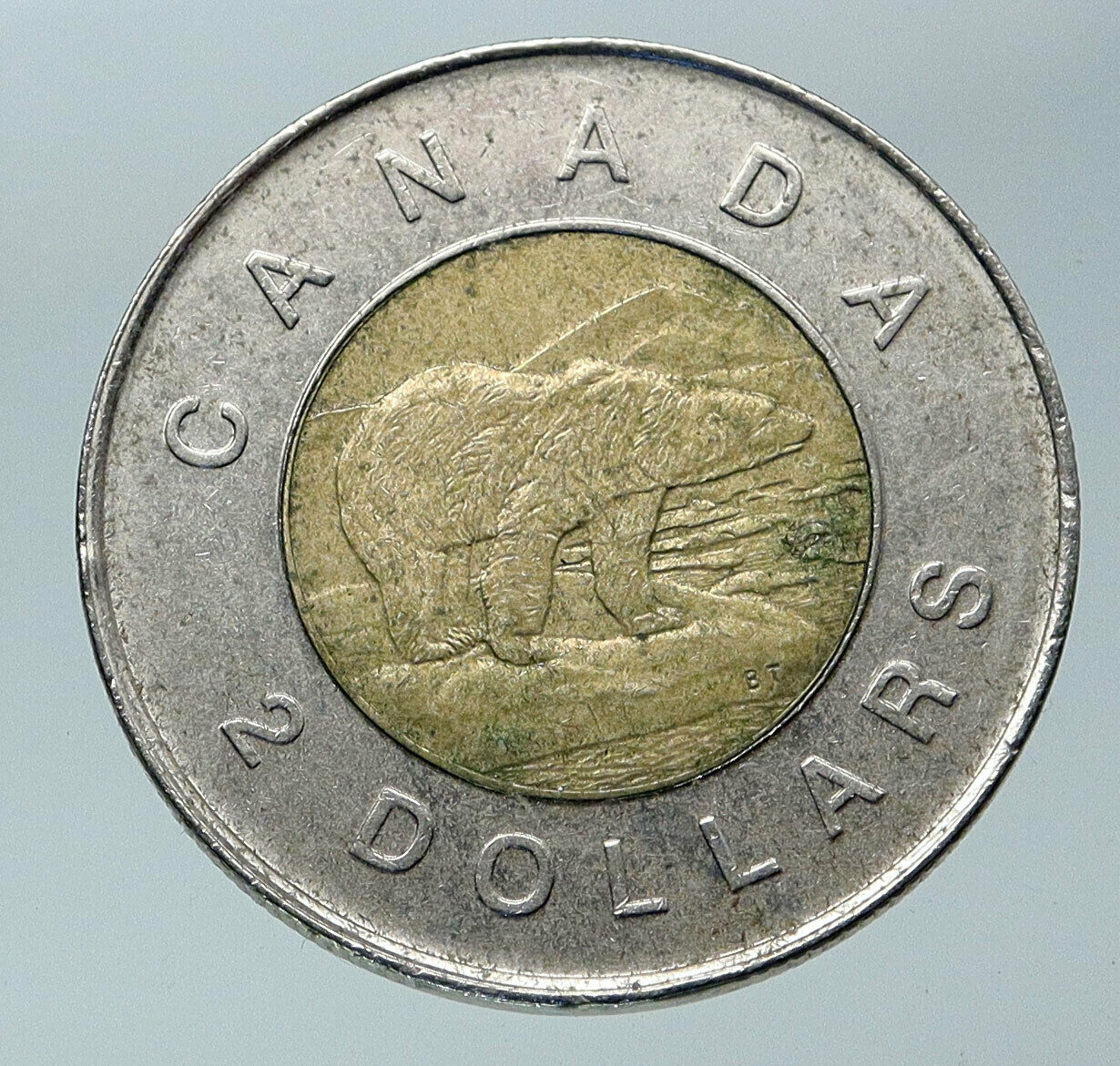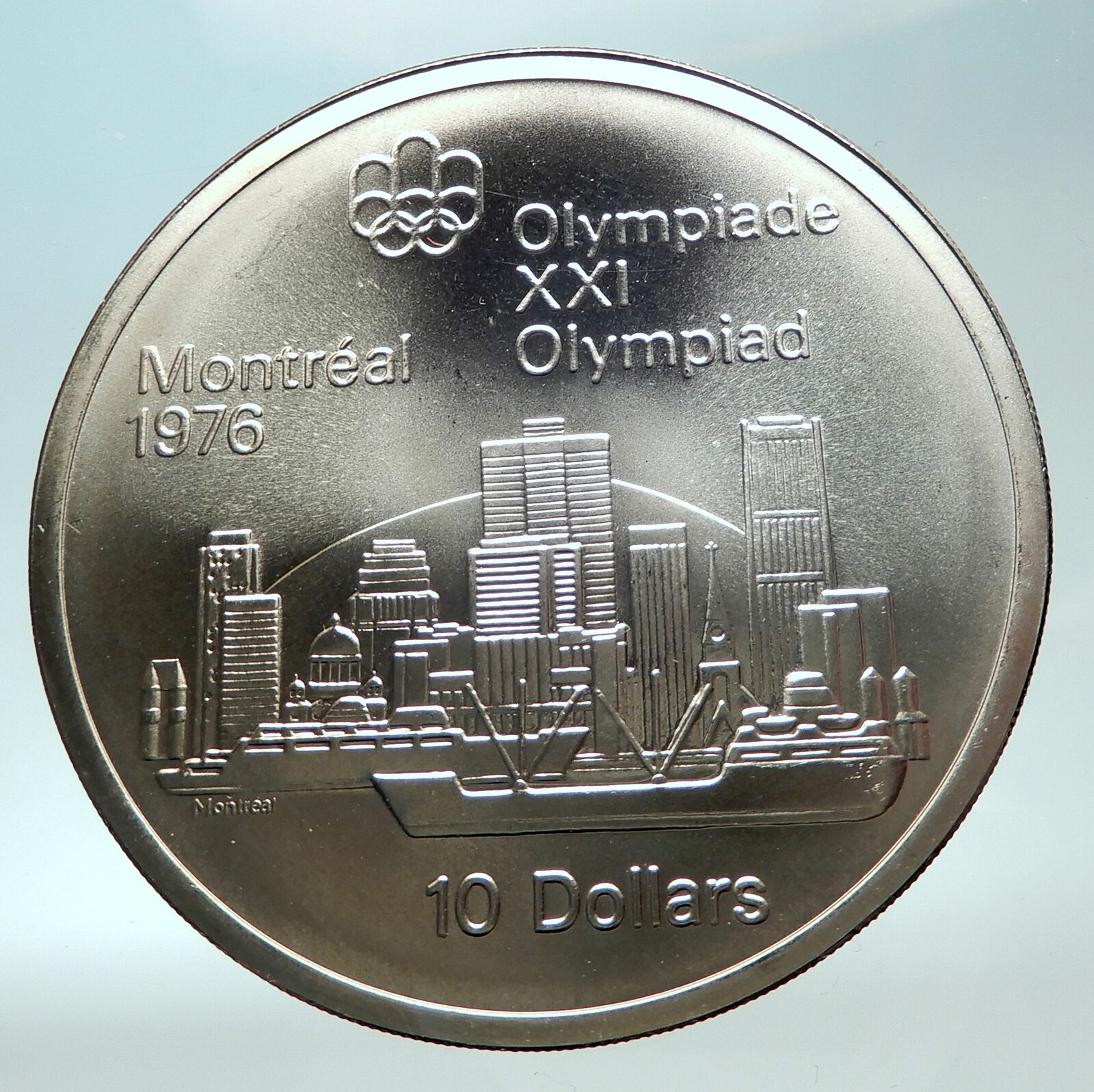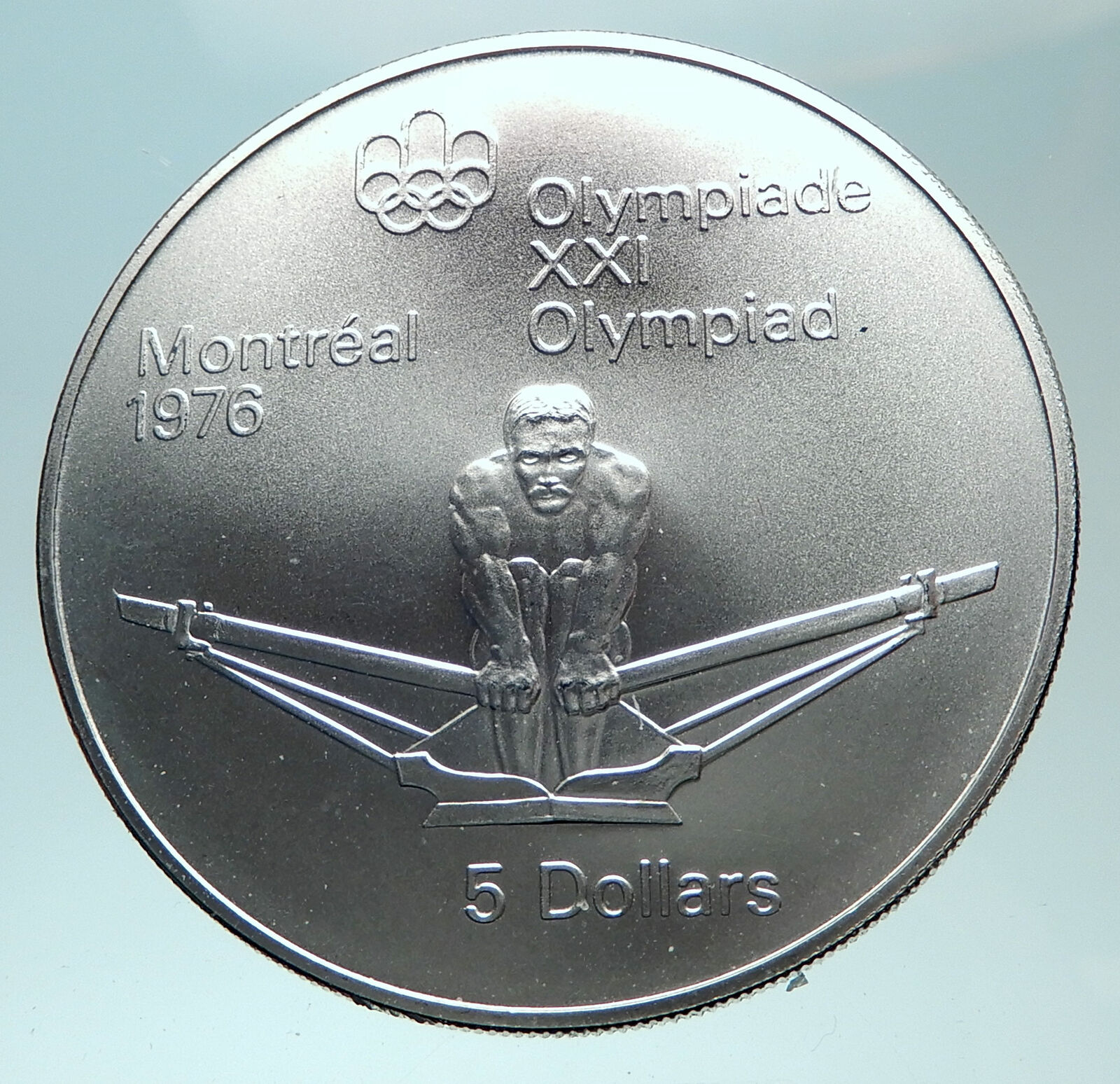|
Canada
1996 Set of Seven Coins, 5 are Silver
Set includes a Silver Dollar and a Nickel-plated Dollar, Silver 50 Cent, Silver 25 Cent, Silver 10 Cent, Silver 5 Cent and Bronze Cent.
The Dollar is:
200th Anniversary of the McIntosh Apple
1996 Proof Silver Dollar 36.07mm (25.175 grams) 0.925 Silver (0.7487 oz. ASW)
Reference: KM# 274
ELIZABETH II D·G·REGINA, Bust of Queen Elizabeth II facing right.
McINTOSH 1796 CANADA DOLLAR 1996, Apple with leaves and banner atop apple tree field.
You are bidding on the exact item pictured, provided with a Certificate of Authenticity and Lifetime Guarantee of Authenticity.
 The McIntosh, McIntosh Red, or colloquially the Mac, is an apple cultivar, the national apple of Canada. The fruit has red and green skin, a tart flavour, and tender white flesh, which ripens in late September. In the 20th century it was the most popular cultivar in Eastern Canada and New England, and is considered an all-purpose apple, suitable both for cooking and eating raw. Apple Inc. employee Jef Raskin named the Macintosh computer line after the fruit. John McIntosh discovered the original McIntosh sapling on his Dundela farm in Upper Canada in 1811. He and his wife cultivated it, and the family started grafting the tree and selling the fruit in 1835. In 1870, it entered commercial production, and became common in northeastern North America after 1900. While still important in production, the fruit’s popularity fell in the early 21st century in the face of competition from varieties such as the Gala. According to the US Apple Association website it is one of the fifteen most popular apple cultivars in the United States. A mutant(sport) of McIntosh is McIntosh Rogers, synonyms: Red Mc Intosh, Double Red Mc Intosh. This mutant was found in Dansville, New York, USA in 1930. The McIntosh, McIntosh Red, or colloquially the Mac, is an apple cultivar, the national apple of Canada. The fruit has red and green skin, a tart flavour, and tender white flesh, which ripens in late September. In the 20th century it was the most popular cultivar in Eastern Canada and New England, and is considered an all-purpose apple, suitable both for cooking and eating raw. Apple Inc. employee Jef Raskin named the Macintosh computer line after the fruit. John McIntosh discovered the original McIntosh sapling on his Dundela farm in Upper Canada in 1811. He and his wife cultivated it, and the family started grafting the tree and selling the fruit in 1835. In 1870, it entered commercial production, and became common in northeastern North America after 1900. While still important in production, the fruit’s popularity fell in the early 21st century in the face of competition from varieties such as the Gala. According to the US Apple Association website it is one of the fifteen most popular apple cultivars in the United States. A mutant(sport) of McIntosh is McIntosh Rogers, synonyms: Red Mc Intosh, Double Red Mc Intosh. This mutant was found in Dansville, New York, USA in 1930.
.svg/220px-Canada_(orthographic_projection).svg.png)  Canada is a country, consisting of ten provinces and three territories, in the northern part of the continent of North America. It extends from the Atlantic to the Pacific and northward into the Arctic Ocean, covering 9.98 million square kilometres (3.85 million square miles) in total, making it the world’s second-largest country by total area and the fourth-largest country by land area. Canada’s common border with the United States forms the world’s longest land border. Canada is sparsely populated overall, the majority of its land territory being dominated by forest and tundra as well as the mountain range of the Rocky Mountains; about four-fifths of the population live near to the southern border. The majority of Canada has a cold or severely cold winter climate, but southerly areas are warm in summer. Canada is a country, consisting of ten provinces and three territories, in the northern part of the continent of North America. It extends from the Atlantic to the Pacific and northward into the Arctic Ocean, covering 9.98 million square kilometres (3.85 million square miles) in total, making it the world’s second-largest country by total area and the fourth-largest country by land area. Canada’s common border with the United States forms the world’s longest land border. Canada is sparsely populated overall, the majority of its land territory being dominated by forest and tundra as well as the mountain range of the Rocky Mountains; about four-fifths of the population live near to the southern border. The majority of Canada has a cold or severely cold winter climate, but southerly areas are warm in summer.
The land now called Canada has been inhabited for millennia by various Aboriginal peoples. Beginning in the late 15th century, British and French colonies were established on the region’s Atlantic coast. As a consequence of various conflicts, the United Kingdom gained and lost North American territories until left, in the late 18th century, with what mostly comprises Canada today. Pursuant to the British North America Act, on July 1, 1867, three colonies joined to form the autonomous federal Dominion of Canada. This began an accretion of provinces and territories to the new self-governing Dominion. In 1931, Britain granted Canada near total independence with the Statute of Westminster 1931 and full sovereignty was attained when the Canada Act 1982 severed the vestiges of legal dependence on the British parliament.
Canada is a federal parliamentary democracy and a constitutional monarchy, Queen Elizabeth II being the current head of state. The country is officially bilingual at the federal level. It is one of the world’s most ethnically diverse and multicultural nations, the product of large-scale immigration from many countries, with a population of approximately 35 million as of 2015. Its advanced economy is the eleventh largest in the world, relying chiefly upon its abundant natural resources and well-developed international trade networks. Canada’s long and complex relationship with the United States has had a significant impact on its economy and culture.
Canada is a developed country and one of the wealthiest in the world, with the tenth highest nominal per capita income globally, and the eighth highest ranking in the Human Development Index. It ranks among the highest in international measurements of government transparency, civil liberties, quality of life, economic freedom, and education. Canada is a Commonwealth Realm member of the Commonwealth of Nations, a member of the Francophonie, and part of several major international and intergovernmental institutions or groupings including the North Atlantic Treaty Organization, the G8, the Group of Ten, the G20, the North American Free Trade Agreement and the Asia-Pacific Economic Cooperation forum.
|








 The McIntosh, McIntosh Red, or colloquially the Mac, is an apple cultivar, the national apple of Canada. The fruit has red and green skin, a tart flavour, and tender white flesh, which ripens in late September. In the 20th century it was the most popular cultivar in Eastern Canada and New England, and is considered an all-purpose apple, suitable both for cooking and eating raw. Apple Inc. employee Jef Raskin named the Macintosh computer line after the fruit. John McIntosh discovered the original McIntosh sapling on his Dundela farm in Upper Canada in 1811. He and his wife cultivated it, and the family started grafting the tree and selling the fruit in 1835. In 1870, it entered commercial production, and became common in northeastern North America after 1900. While still important in production, the fruit’s popularity fell in the early 21st century in the face of competition from varieties such as the Gala. According to the US Apple Association website it is one of the fifteen most popular apple cultivars in the United States. A mutant(sport) of McIntosh is McIntosh Rogers, synonyms: Red Mc Intosh, Double Red Mc Intosh. This mutant was found in Dansville, New York, USA in 1930.
The McIntosh, McIntosh Red, or colloquially the Mac, is an apple cultivar, the national apple of Canada. The fruit has red and green skin, a tart flavour, and tender white flesh, which ripens in late September. In the 20th century it was the most popular cultivar in Eastern Canada and New England, and is considered an all-purpose apple, suitable both for cooking and eating raw. Apple Inc. employee Jef Raskin named the Macintosh computer line after the fruit. John McIntosh discovered the original McIntosh sapling on his Dundela farm in Upper Canada in 1811. He and his wife cultivated it, and the family started grafting the tree and selling the fruit in 1835. In 1870, it entered commercial production, and became common in northeastern North America after 1900. While still important in production, the fruit’s popularity fell in the early 21st century in the face of competition from varieties such as the Gala. According to the US Apple Association website it is one of the fifteen most popular apple cultivars in the United States. A mutant(sport) of McIntosh is McIntosh Rogers, synonyms: Red Mc Intosh, Double Red Mc Intosh. This mutant was found in Dansville, New York, USA in 1930..svg/220px-Canada_(orthographic_projection).svg.png)
 Canada is a country, consisting of ten provinces and three territories, in the northern part of the continent of North America. It extends from the Atlantic to the Pacific and northward into the Arctic Ocean, covering 9.98 million square kilometres (3.85 million square miles) in total, making it the world’s second-largest country by total area and the fourth-largest country by land area. Canada’s common border with the United States forms the world’s longest land border. Canada is sparsely populated overall, the majority of its land territory being dominated by forest and tundra as well as the mountain range of the Rocky Mountains; about four-fifths of the population live near to the southern border. The majority of Canada has a cold or severely cold winter climate, but southerly areas are warm in summer.
Canada is a country, consisting of ten provinces and three territories, in the northern part of the continent of North America. It extends from the Atlantic to the Pacific and northward into the Arctic Ocean, covering 9.98 million square kilometres (3.85 million square miles) in total, making it the world’s second-largest country by total area and the fourth-largest country by land area. Canada’s common border with the United States forms the world’s longest land border. Canada is sparsely populated overall, the majority of its land territory being dominated by forest and tundra as well as the mountain range of the Rocky Mountains; about four-fifths of the population live near to the southern border. The majority of Canada has a cold or severely cold winter climate, but southerly areas are warm in summer.




